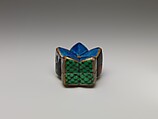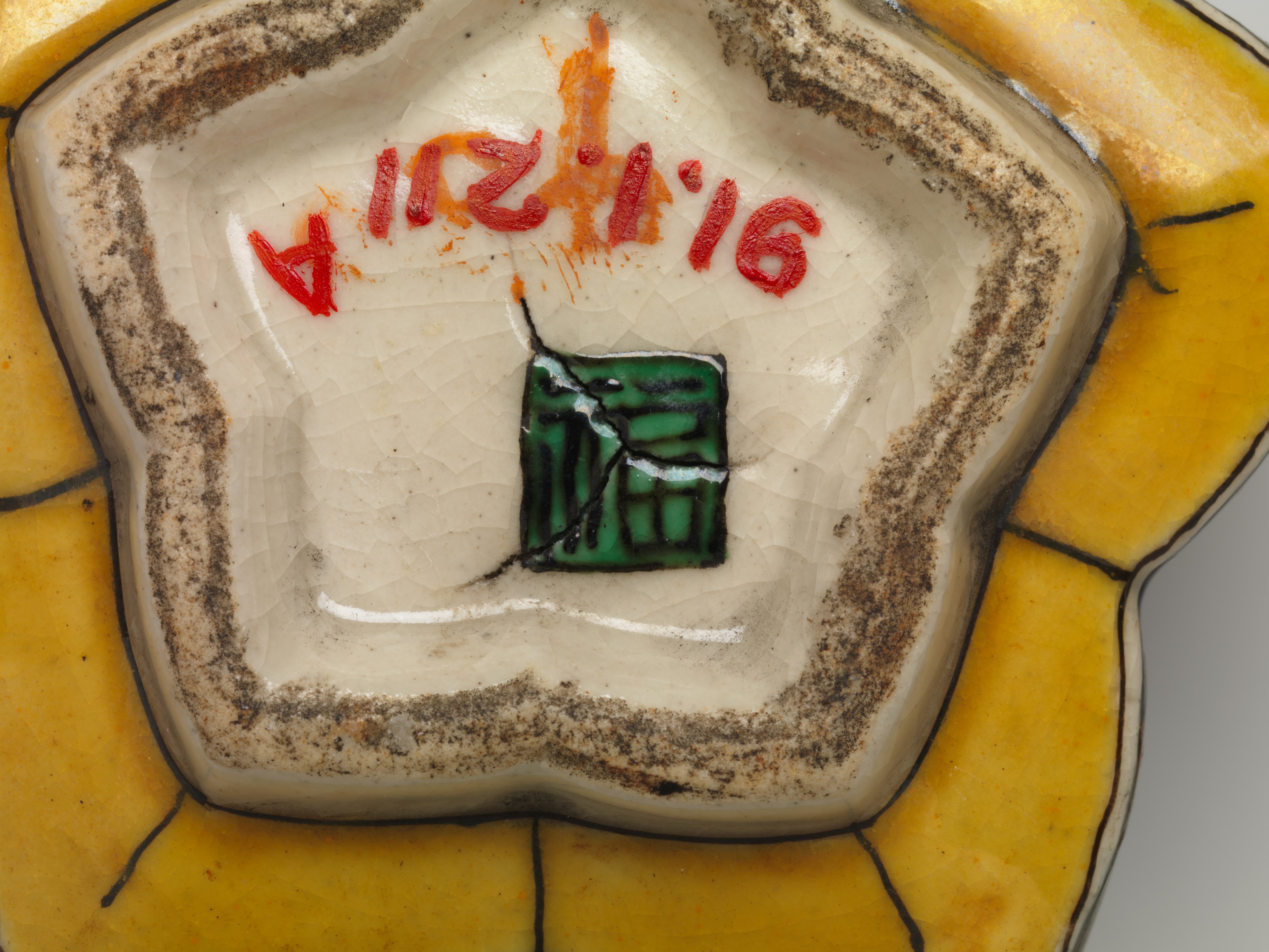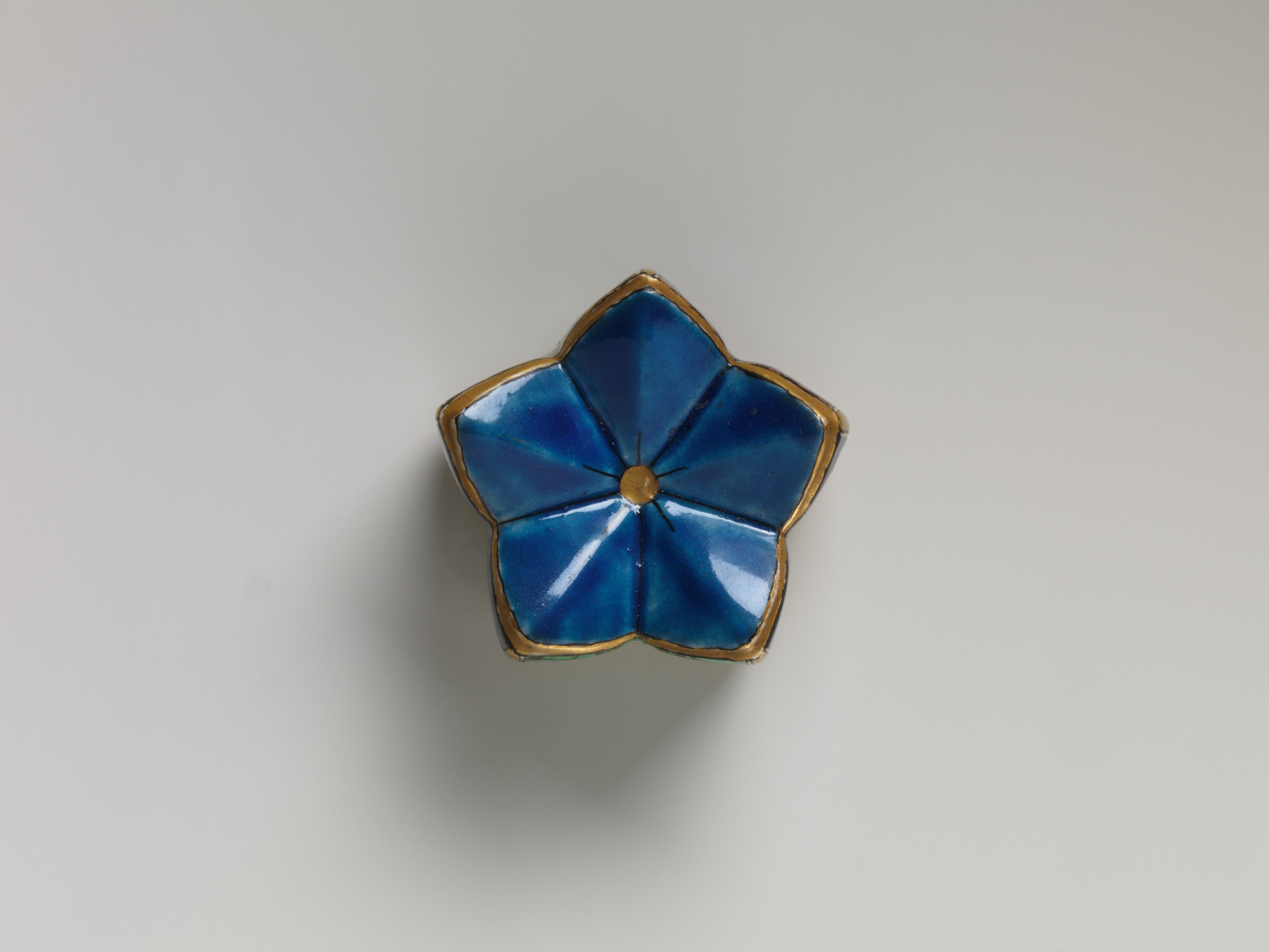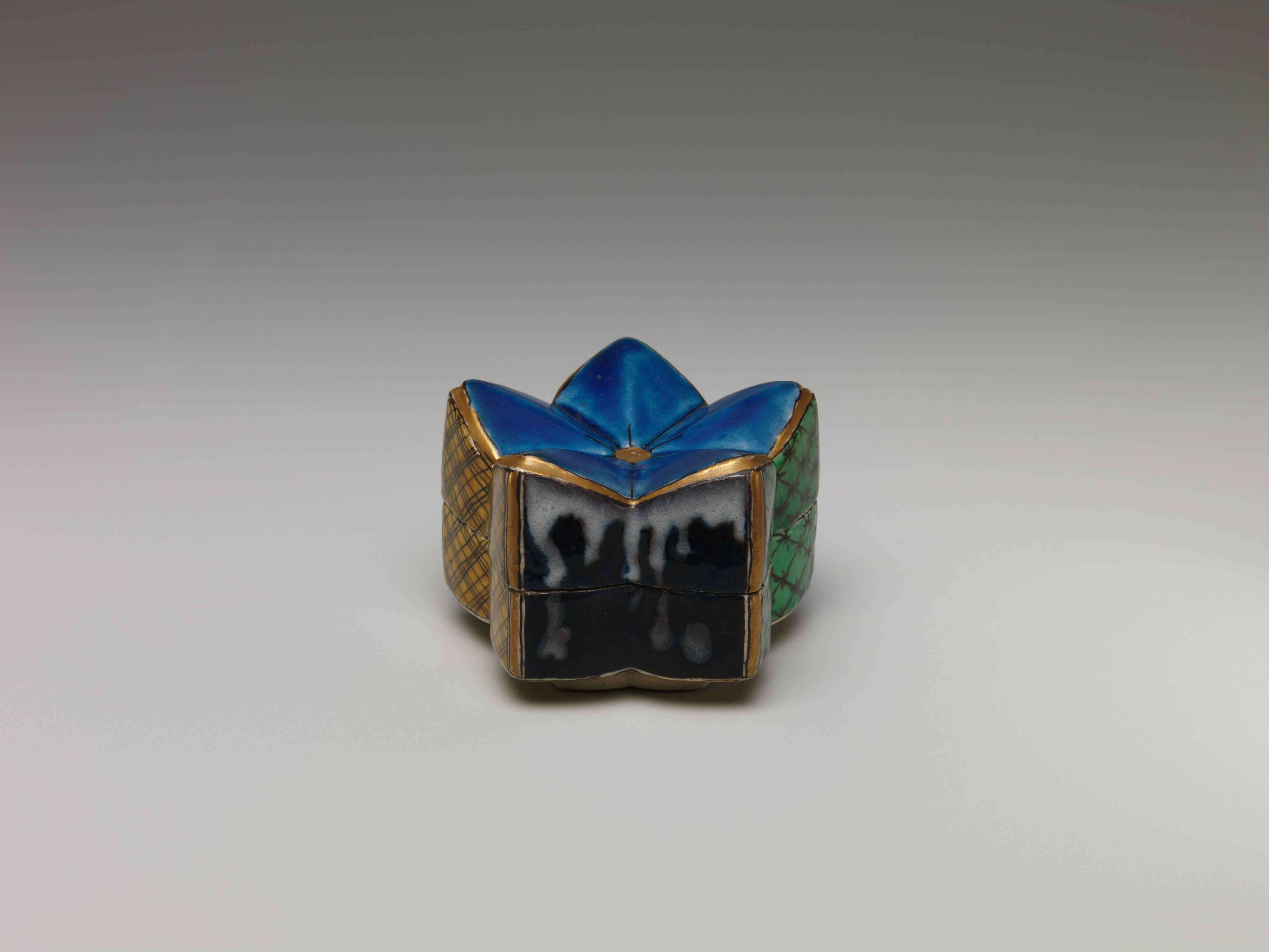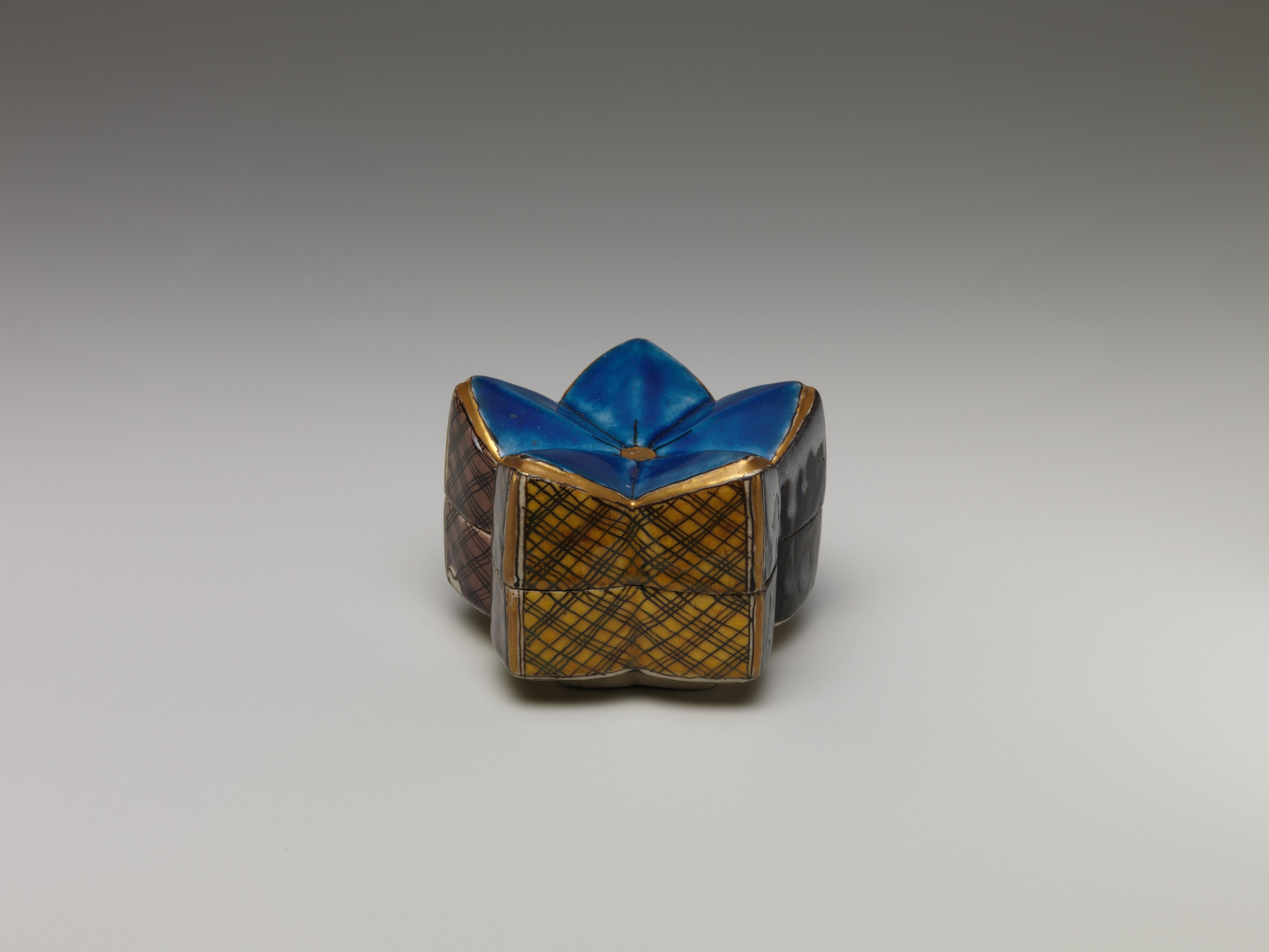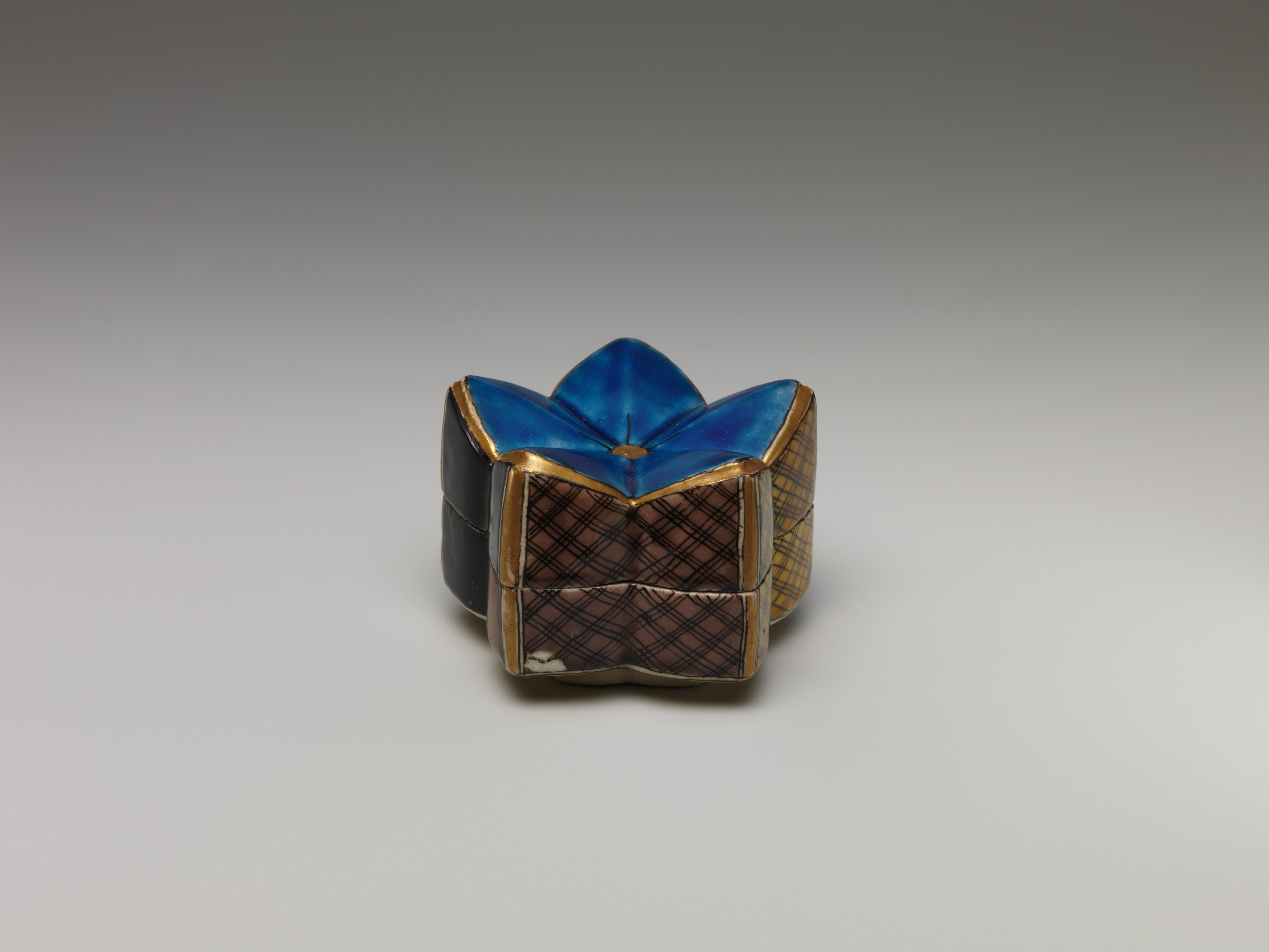Incense Box in the Shape of a Plum Blossom
Not on view
Plum trees were not native to Japan, but were brought over to the island country from China in the Nara period (710–784). Plum blossoms appeared instantly in contemporary court literature, where they were associated with the bush warbler, representing the beginning of spring. Along with its symbolic value as a harbinger of spring, the plum blossom's sweet fragrance was also an inspiration for courtly poetry. From as early as the Heian period (794–1185), plum trees appeared in paintings and in stylized form on decorative art objects, upon which frequently only the flowers were depicted. From the early history of the Japanese incense culture, plum had a significant role. Several incense mixtures and incense games were related to the flower. As a reference to its smell, the plum motif was often represented on incense-related utensils. Incense mixture balls would most likely have been stored in this plum-flower-shaped incense box.
Due to rights restrictions, this image cannot be enlarged, viewed at full screen, or downloaded.
This artwork is meant to be viewed from right to left. Scroll left to view more.
